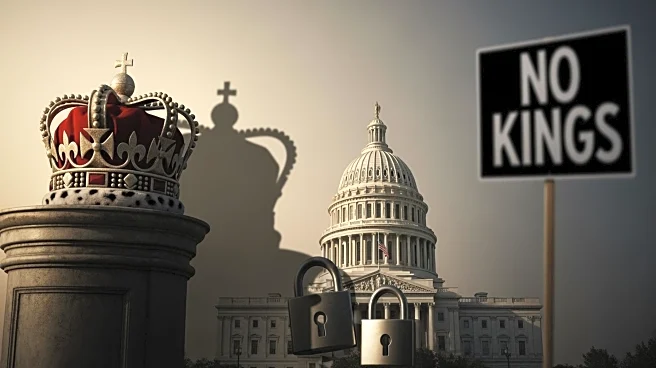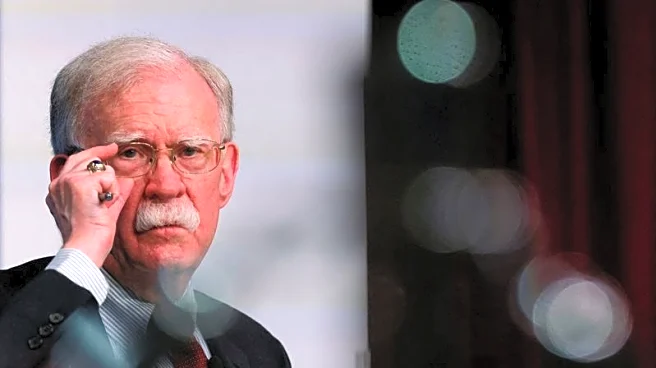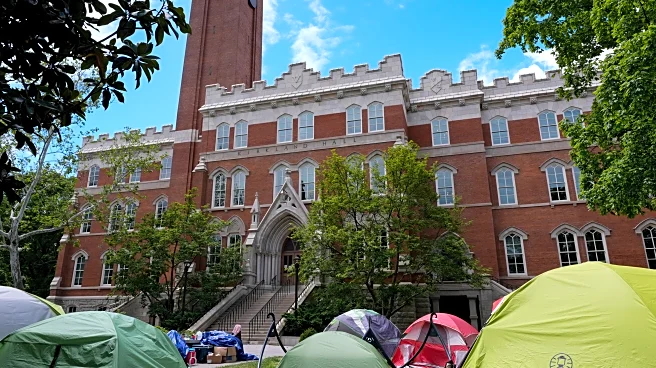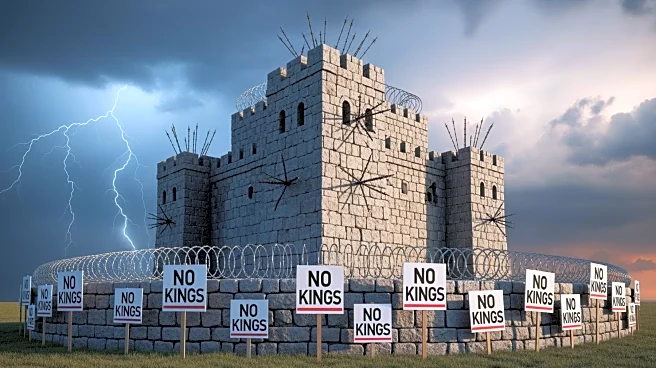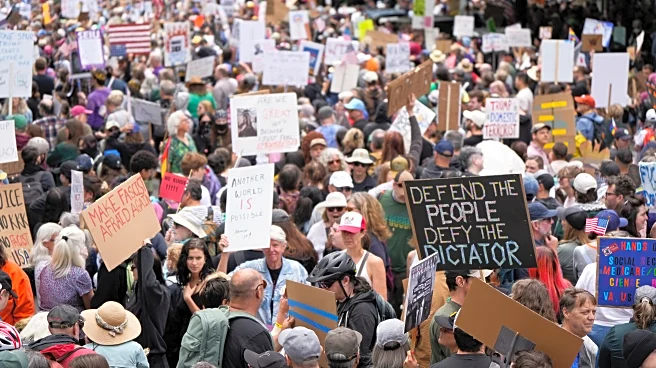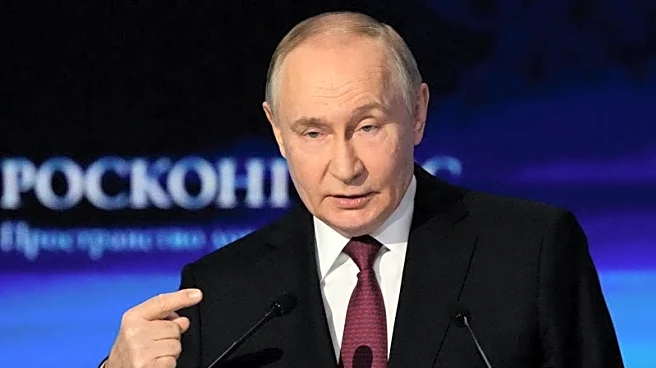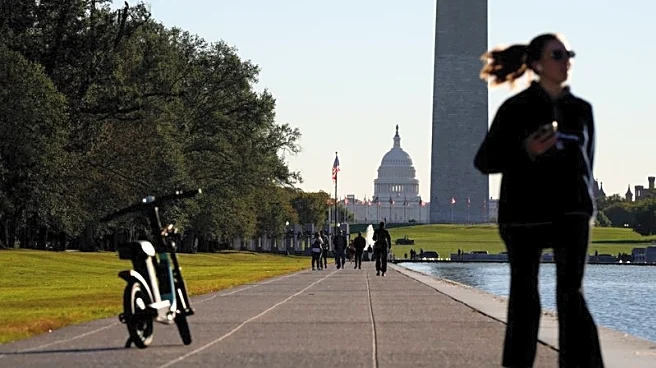What's Happening?
In recent anti-Trump protests, demonstrators have adopted a unique strategy by wearing inflatable costumes, such as frogs, chickens, and T. rex dinosaurs, to counter Republican narratives that depict these events as violent 'hate America rallies.' This
approach was prominently displayed during the 'No Kings' protests, which took place across various U.S. cities, including Washington, Portland, and Boston. The costumes serve as a visual rebuttal to claims of lawlessness in cities like Portland, which President Trump has described as 'war-ravaged.' The initiative, partly organized by local activists, aims to maintain a peaceful and humorous atmosphere, contrasting with the serious accusations of violence and chaos often associated with these protests.
Why It's Important?
The use of inflatable costumes in protests against President Trump represents a strategic shift in how demonstrators convey their messages. By adopting a light-hearted and absurd approach, protesters aim to diffuse the tension and negative perceptions often associated with such gatherings. This tactic not only challenges the portrayal of these events as violent but also seeks to engage a broader audience by making the protests more approachable and less intimidating. The strategy has garnered attention from both political strategists and the media, highlighting its effectiveness in reframing the narrative around anti-Trump demonstrations. This could potentially influence public perception and media coverage, impacting the political discourse surrounding the Trump administration's policies and actions.
What's Next?
As the trend of using inflatable costumes in protests continues to gain traction, it is likely that more demonstrators will adopt this approach in future rallies. Organizers like Brooks Brown, who co-founded 'Operation Inflation,' are actively soliciting donations to provide free costumes for participants, indicating a sustained effort to maintain this strategy. Political figures and strategists may also respond to this trend, either by embracing similar tactics or by attempting to counteract its impact. The ongoing use of costumes could influence how future protests are organized and perceived, potentially leading to a shift in how political activism is conducted in the U.S.
Beyond the Headlines
The adoption of inflatable costumes in protests raises questions about the role of humor and absurdity in political activism. While the costumes serve to counter negative stereotypes, they also highlight the challenges of balancing serious political messages with light-hearted tactics. This approach may prompt discussions about the effectiveness of non-traditional protest methods and their ability to influence public opinion and policy. Additionally, the trend underscores the evolving nature of political demonstrations in the digital age, where visual impact and media coverage play crucial roles in shaping narratives.


